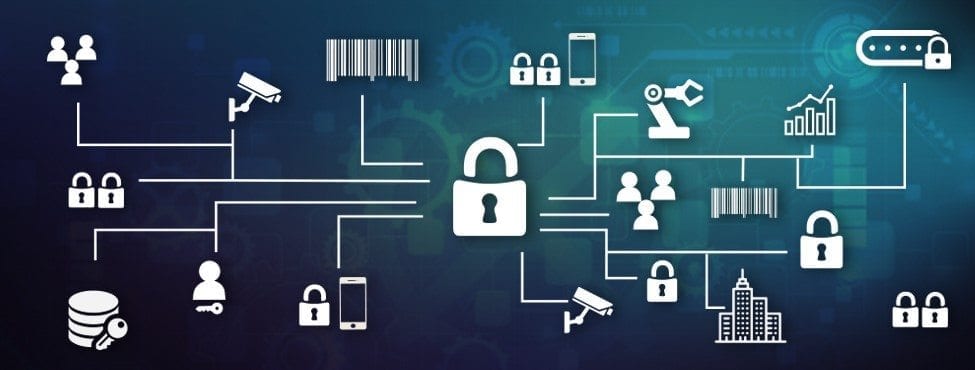
Over the past few years, we’ve seen huge advances occurring within cyber security. There are several reasons for this significant increase. From the increasing media coverage of larger and more sophisticated cyber-attacks, to the less reported on, but still just as important, increase in technological attack vectors that has been happening for the last several years.
The Internet of Things (IoT) is one of the key drivers in various industries looking to bolster their cyber security operations.
There are several ways in which the Internet of Things and cyber security are moulding and shaping each other, and in this article, we’ll be looking at a select few of the ways in which the Internet of Things is changing the cyber security landscape.
So, let’s jump straight in.
5 Ways the Internet of Things Is Changing the Cyber Security Landscape
The Internet of Things and cyber security go back as far as the former’s inception. As new IoT technologies were developed and adopted by commercial and industrial interests, their security vulnerabilities, attack vectors, connectivity, and data generation were all examined during their implementation, rather than beforehand. This has lead us to the situation in which we now find ourselves.
So, with this in mind, let’s take a look at a few of the ways in which the Internet of Things is changing the cyber security landscape.
More Devices and Connectivity
With more connected devices than ever before, the sheer number of hackable devices has skyrocketed over the last few years. From smartphone and tablets to IoT sensors, smart meters, and even smart buildings nowadays, there has never been a more open season for hackers and those looking to commit cyber-attacks and cyber-crimes.
For this reason, more and more security solutions aimed at protecting the ever-increasing number of “things” that are connecting us and our technology together. With the number of smart and connected devices only seemingly going up, it seems reasonable to suggest that the number of device security solutions that are bespoke to the various different kinds of devices and technologies will likely begin to appear sooner rather than later.
More Attack Vectors
With more and more connected devices and IoT technologies have also come more and more attack vectors which can then be exploited by hackers or targeted cyber-attacks. This increase has gone on to highlight the vulnerability of many IoT technologies and devices, however, such concerns have not significantly affected the development or implementation of these technologies in and around commercial and industrial sectors.
This increase in the numbers of ways in which hackers and cyber criminals can intrude on and exploit devices and technologies, while not dampening the resolve of those integrating IoT technologies into their existing network architectures, has turned their attention to the need for adequate cyber security and has helped to drive much of the development of IoT security solutions.
Data, Data, Data
Data has quickly become one of the most valuable commodities on the planet. According to DOMO, on average, Americans will use 2,657,700 GB of data every single minute. And much of this is of great value to a very many different organisations and people. IoT devices generate huge amounts of data every day and you can bet your bottom dollar that this data is valuable enough to someone to there are hackers out there trying to steal it.
For this reason, data generating IoT technologies will likely become top priority for those looking to secure their IoT data and devices. Given the value of the data produced, and the harm that can be done from its being leaked or stolen, encryption and other security services will likely become dominant players in the cyber security arena over the coming years.
Built-In Security?
You may expect that the latest IoT devices would all come with the latest security software pre-installed, but you would be wrong. Various studies have shown that the vast majority of IoT technologies and devices come with little to no built-in security features and will often require network solutions or software to be purchased to secure the network IoT devices are connected to. There are various specialized cyber security hardware and software solutions purposely designed for the application environment considering unique challenges of each industry.
However, with cyber security hitting the headlines more and more, and with customers and the general public both becoming more clued-up about cyber security and the risks they face, we could soon see this situation change. It seems reasonable to believe that customer demands will eventually call for much better built-in security from their IoT devices and OEMs will have to respond when such a day comes.
Automation
Alongside and even way before the Internet of Things, automation has been slowly but surely making its way through the vast majority of modern industrial processes and has now even found itself touching and transforming the cyber security arena. With automated systems becoming more prevalent and human beings becoming further and further removed from many operations, protecting these systems from malicious exploitation has become a top priority for many enterprises experimenting with automation.
Automated cyber security systems that include other cutting-edge technologies such as artificial intelligence (AI) and machine learning are also becoming increasingly common. These technologies are enabling businesses and enterprises to both detect and react to cyber incidents in time scales that would be generally impossible for humans to compete with. In the future, it seems likely that cyber security systems may be almost entirely automated with help from AI and machine learning.